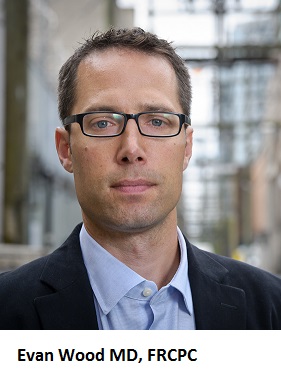It is no secret that the consequences of drug addiction are severe, sometimes even fatal. Imagine, for a moment, an opportunity that offered a completely different outcome for Canadians suffering from the stigma that surrounds severe addiction.
Imagine an opportunity that provided a welcome environment free of judgment to those most entrenched in their disease. A setting that has repeatedly proven to substantially reduce the chance of acquiring a life threatening infectious disease or die from a drug overdose. A place where one could access health care services without shame, engage in medical detoxification and be referred for other addiction treatment.
It would be hard to comprehend why anyone would not be in support of such a program. Yet that is exactly where we find ourselves with the federal government’s entrenched opposition to Vancouver’s supervised injecting facility, Insite.
 Despite a wealth of scientific evidence repeatedly demonstrating the success of Insite in reducing harms associated with illicit drug use and widespread endorsement for the program from numerous health bodies, including the Canadian Medical Association, the federal government went all the way to the Supreme Court of Canada in an effort to have Insite shut down. They were ultimately unsuccessful when a unanimous 2011 decision stipulated the facility remain open and also described how the government must consider applications for future programs.
Despite a wealth of scientific evidence repeatedly demonstrating the success of Insite in reducing harms associated with illicit drug use and widespread endorsement for the program from numerous health bodies, including the Canadian Medical Association, the federal government went all the way to the Supreme Court of Canada in an effort to have Insite shut down. They were ultimately unsuccessful when a unanimous 2011 decision stipulated the facility remain open and also described how the government must consider applications for future programs.
The government’s response? Announcement of its “Respect for Communities Act.” A Bill so onerous it seemed geared towards making it
 impossible for any organization to meet eligibility criteria to even submit a future application. Ultimately, the Bill did not become law but was quickly succeeded by the introduction of Bill C2
impossible for any organization to meet eligibility criteria to even submit a future application. Ultimately, the Bill did not become law but was quickly succeeded by the introduction of Bill C2
The government’s stark opposition to supervised injecting facilities is rather confusing given their support for other health interventions for intravenous drug users. At the 2008 International AIDS Conference, former Health Minister Tony Clement made clear the Conservatives’ support for needle exchange programs, which involve handing out clean needles to addicts and have proven effective at reducing the spread of infections like HIV. In the case of Insite, however, Clement made clear his strong opposition to the program famously calling it an “abomination.”
The irony is that needle exchange programs do essentially the same function as Insite but they don’t regulate how and where the needles are used. For instance, individuals using a needle exchange may take a needle and subsequently inject in full view of the public and then dispose of the needle in parks or other areas where there is a risk of needle stick injury. Contrast this with Insite, where injections take place out of the public view, away from vulnerable youth, and onsite disposals ensure used needles can not find their way into public spaces. Strict rules and nursing supervision also precludes the possibility of a used syringe being passed between users at Insite, a behavior primarily responsible for the spread of HIV among this population and not fully prevented by traditional needle exchange programs. Locally, Insite has contributed to a 90 percent reduction in new HIV cases in BC, which is remarkable given each new HIV infection costs on average $500,000 in medical costs. Insite also forces its clients to temporarily remain onsite after injecting where an addiction treatment program is co-located. As a result a study published in the New England Journal of Medicine demonstrated that weekly use of supervised injecting facilities was associated with a greater than 70 percent increase in the use of medical detoxification among its clients.
Despite these clear successes, and the ability of the program to reduce public drug use and the spread of disease and death, the federal government remains firm in their opposition to supervised injecting facilities. Unfortunately, many desperately addicted Canadians’ lives currently hang in the balance as a result.
What further evidence does the government need to support this lifesaving program?
Authors: Seonaid Nolan, MD, FRCPC and Evan Wood, MD, FRCPC
**Please note that the material presented here does not necessarily imply endorsement or agreement by individuals at the Centre for Addictions Research of BC

This recently published journal article shows that we need more supervised consumption facilities in BC http://www.ncbi.nlm.nih.gov/pmc/articles/PMC3599963/
Reblogged this on Jac's Voice – on living with addiction and mental illness.